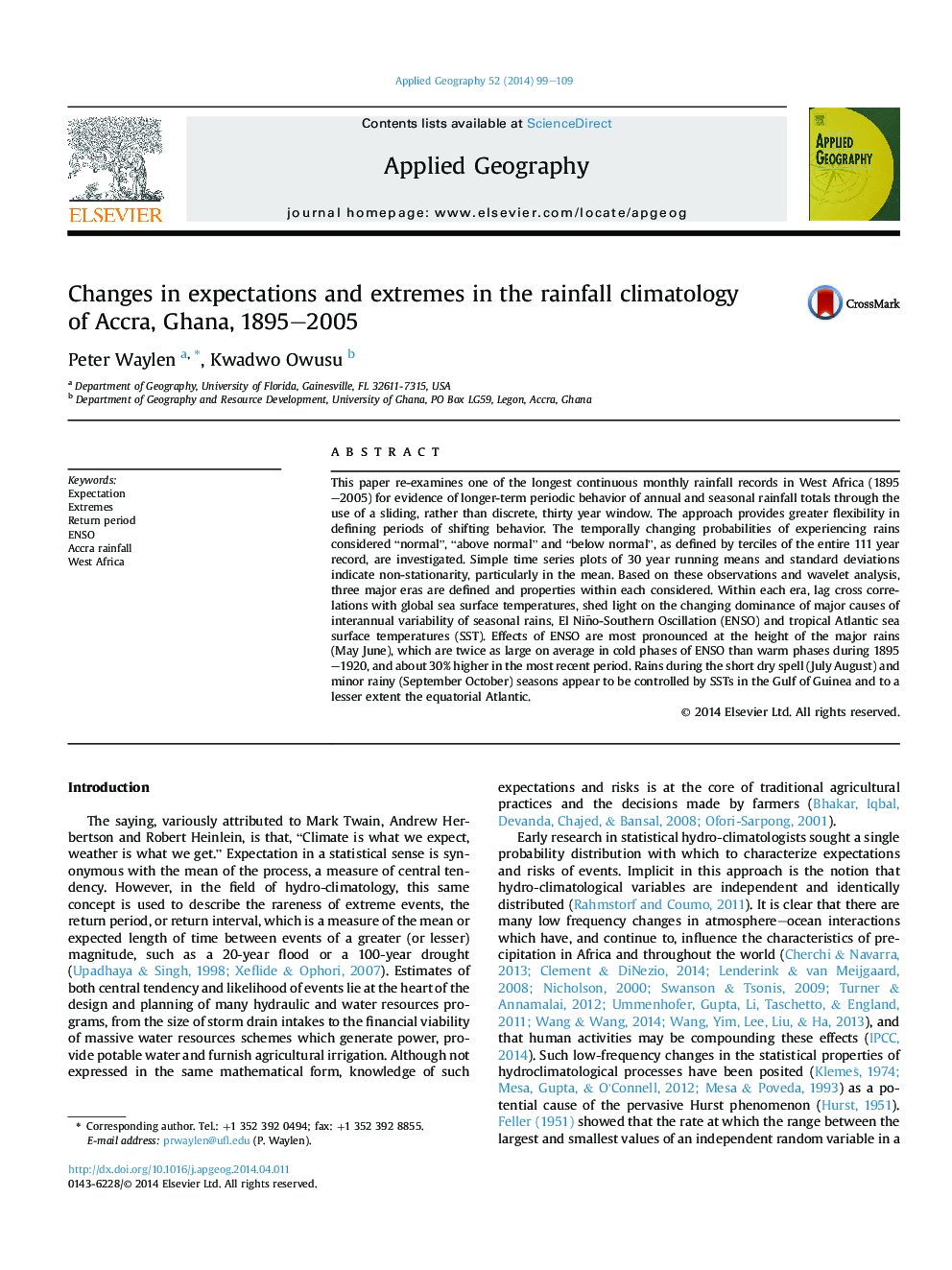| Article ID | Journal | Published Year | Pages | File Type |
|---|---|---|---|---|
| 6538758 | Applied Geography | 2014 | 11 Pages |
Abstract
This paper re-examines one of the longest continuous monthly rainfall records in West Africa (1895-2005) for evidence of longer-term periodic behavior of annual and seasonal rainfall totals through the use of a sliding, rather than discrete, thirty year window. The approach provides greater flexibility in defining periods of shifting behavior. The temporally changing probabilities of experiencing rains considered “normal”, “above normal” and “below normal”, as defined by terciles of the entire 111 year record, are investigated. Simple time series plots of 30 year running means and standard deviations indicate non-stationarity, particularly in the mean. Based on these observations and wavelet analysis, three major eras are defined and properties within each considered. Within each era, lag cross correlations with global sea surface temperatures, shed light on the changing dominance of major causes of interannual variability of seasonal rains, El Niño-Southern Oscillation (ENSO) and tropical Atlantic sea surface temperatures (SST). Effects of ENSO are most pronounced at the height of the major rains (May June), which are twice as large on average in cold phases of ENSO than warm phases during 1895-1920, and about 30% higher in the most recent period. Rains during the short dry spell (July August) and minor rainy (September October) seasons appear to be controlled by SSTs in the Gulf of Guinea and to a lesser extent the equatorial Atlantic.
Related Topics
Life Sciences
Agricultural and Biological Sciences
Forestry
Authors
Peter Waylen, Kwadwo Owusu,
